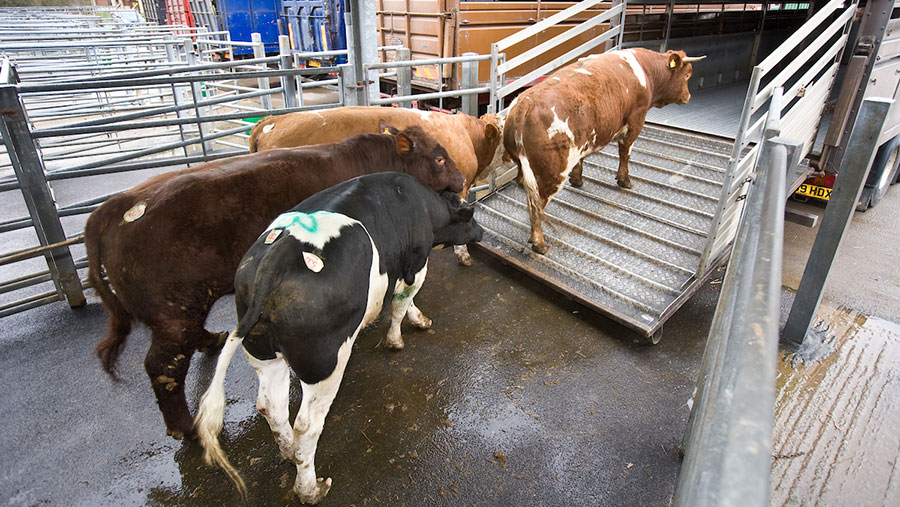Farmer views sought on Defra plans for digital cattle tracing
 © Tim Scrivener
© Tim Scrivener A fully digitised cattle traceability system for England has moved a step closer, with a new Defra consultation on the way animals should be identified and registered, and their movements recorded.
Setting out the case for an overhaul of the current system, Defra warns that effective traceability is essential to control the spread of infectious diseases.
“Failure to do so can have a devastating effect on the economy, international trade and public health,” it says, pointing to the foot-and-mouth outbreak of 2001 which resulted in more than six million head of livestock being culled, and a cost to the UK economy £8bn.
“When we can identify and trace cattle to a location, we have a better chance of tackling disease outbreak,” it says. “The accuracy of traceability data and the speed with which it becomes available is critical to reduce the impact of disease.”
See also: Livestock buyer’s guide to EID
The consultation suggests the current Cattle Tracing System, introduced in 1998, is no longer fit for purpose, being based on information and documents being sent by post and processed manually.
Defra is therefore aiming to put new processes in place “to improve the quality of cattle traceability data and speed at which it is captured”.
Ambition
“We are aiming to reduce the administrative burden for keepers, livestock markets and abattoirs, where possible,” says the consultation.
“When bovine electronic identification is introduced, keepers will be able to scan a beast’s ear tag to access its digital record, make changes, and report births, movements and deaths.
“Our aim is for the digital record to be the single source of truth for all data relating to each beast, so that keepers no longer have to maintain a separate on-farm holding register or manually update passports.”
It is envisaged that markets and abattoirs will be able to process electronically identified animals far more quickly without the need to cross-reference, or manually update passports.
“We will be working closely with stakeholders across all parts of the industry to plan the transition to a fully digital service at a pace that suits industry needs.”
Wider industry views
Having engaged with partners and industry leaders through the Traceability Design User Group, Defra says it now wants to hear from the wider industry and the general public.
The consultation, which lasts for eight weeks, covers the following areas:
- Simplifying the regulations
- A fairer and more proportionate enforcement system
- Bovine Electronic Identification (BeID)
- Future of holding registers
- Removing passports for cattle fitted with BeID
- Movements: 1. Whole movement reporting
2. An option to reporting movements in advance (pre-notification)
3. An option to provide transportation details, - Paperless processes
- Late registration of calves
NFU livestock board chair Richard Findlay said the consultation presented an opportunity to help shape the cattle movement regulations, alongside the development of a new modern traceability service in England.
“The existing Cattle Tracing Service needs to be replaced with a more proportionate and simpler digital service for cattle farmers and the supply chain,” he said.
“There is strong support to transition towards bovine EID, because with the right technology we can improve the accuracy and speed we read cattle ear tags.
“I will be pushing for the best technology that will future proof the sector and deliver accurate recording at the speed of commerce.”
Farmers are invited to take part in the consultation, which closes on 15 November.
